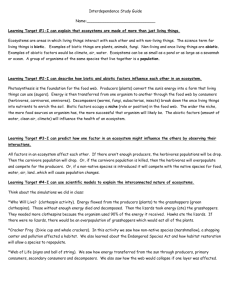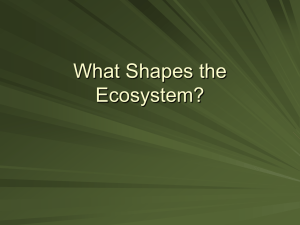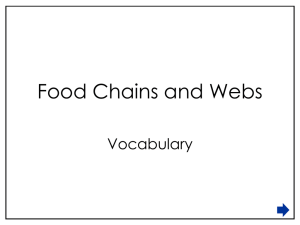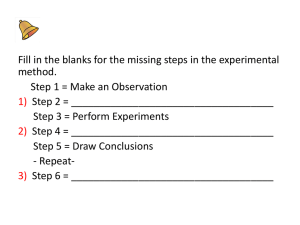No two species can occupy the same niche in the
advertisement
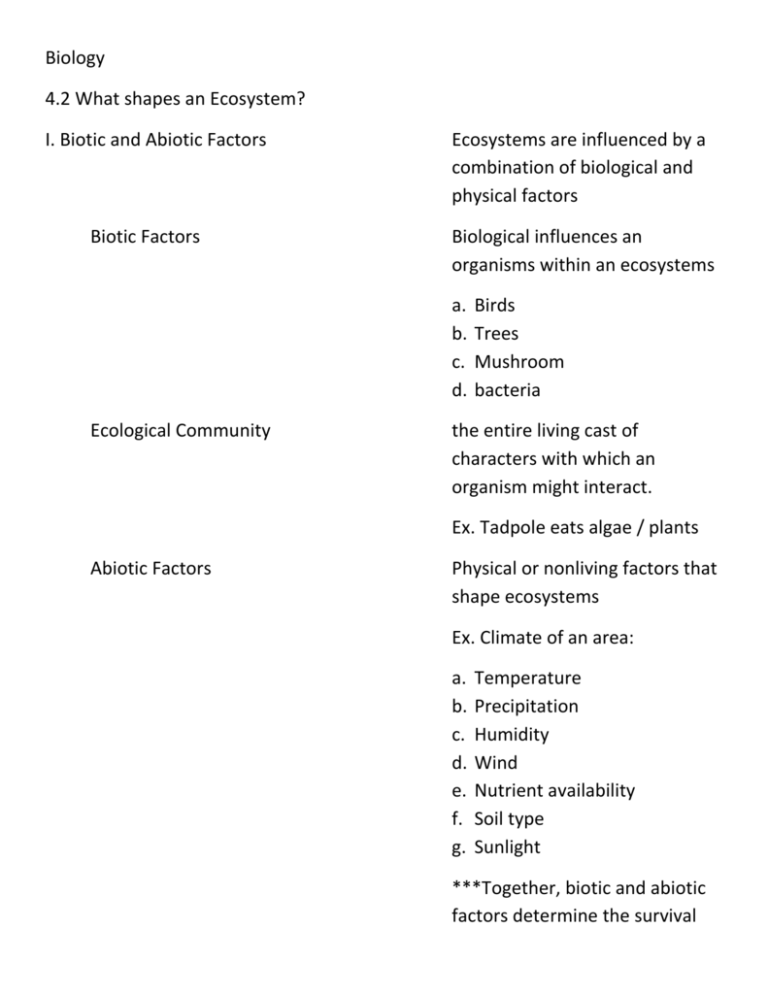
Biology 4.2 What shapes an Ecosystem? I. Biotic and Abiotic Factors Biotic Factors Ecosystems are influenced by a combination of biological and physical factors Biological influences an organisms within an ecosystems a. b. c. d. Ecological Community Birds Trees Mushroom bacteria the entire living cast of characters with which an organism might interact. Ex. Tadpole eats algae / plants Abiotic Factors Physical or nonliving factors that shape ecosystems Ex. Climate of an area: a. b. c. d. e. f. g. Temperature Precipitation Humidity Wind Nutrient availability Soil type Sunlight ***Together, biotic and abiotic factors determine the survival and growth of an organism and the productivity of the ecosystem in which lives. Habitat II. Niche includes biotic and abiotic factors Full range of physical and biological conditions in which an organism lives and the way in which the organism uses those conditions a. Range of temperatures the organism needs to survive b. Combination of biotic and abiotic factors in an ecosystem often determines the number of different niches in that ecosystem 1. Type of food the organism eats 2. How it obtains this food 3. Which other species use the organism as food. III. Community Interactions a. competition b.predation c.various forms of symbiosis A.Competition Organisms of the same or different species attempt to use an ecological resource in the same place at the same time Resource Any necessity of life a. b. c. d. e. Direct Competition Water Nutrients Light Food Space Results in a winner /loser a. Loser organism failing to survive Competitive Exclusion Principle B. Predation No two species can occupy the same niche in the same habitat at the same time An interaction in which one organism captures and feeds on another organism Predator Organism that does the killing and eating Prey Food organism that is eaten or hunted C. Symbiosis Any living relationship in which two species live closely together “living together” 3 main classes: a. Mutualism b. Commensalism c. Parasitism Mutualism Both species benefit from the relationship. Ex. Flowers -> provide insects food Commensalism One member of the association benefits and the other is neither helped nor harmed Ex. Barnacles attach to whale’s skin Parasitism One organism lives on or inside another organism and harms it Host Parasite obtains all or part of its nutritional needs from the other organism Ex. Tapeworms live in intestines of animals IV. Ecological Succession Series of predictable changes that occurs in a community over time ***Ecosystems are constantly changing in response to natural and human disturbances . As an ecosystem changes, older inhabitants gradually die out and new organisms move in, causing further changes in the community A. Primary Succession Succession occurs on surfaces where no soil exists a. Volcanic eruptions build new islands b. Cover land with lava rock or volcanic ash c. Bare rocks exposed when glaciers melt Pioneer Species First species to populate the area Ex. Lichen B. Secondary Succession Components of an ecosystem can be changed by natural events 1. Changes may affect the ecosystem in predictable or unpredictable ways 2. When it is over, community interactions tend to restore the ecosystem to its original condition Ex. Wild Fires Land cleared for farming C. Succession in a Marine Ecosystem 1. Large whale dies and sinks to the normally barren ocean floor 2. Whale carcass attracts a host of scavengers / decomposers 3. Within a year, whale’s tissues have been eaten. Tissues support a small number of fishes 4. Whale’s skeleton supports a third community – heterotrophic bacteria Chemosynthetic bacteria


